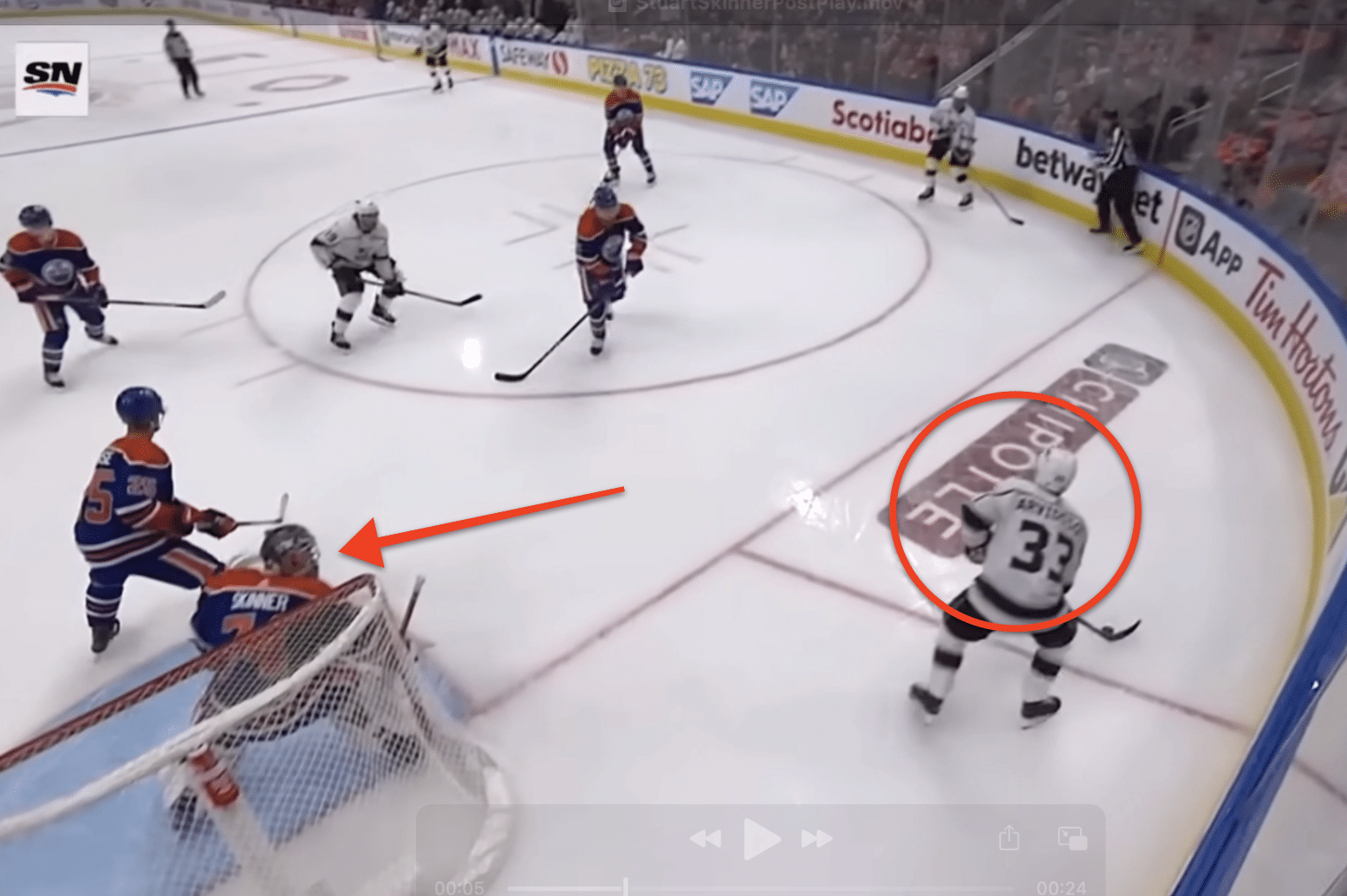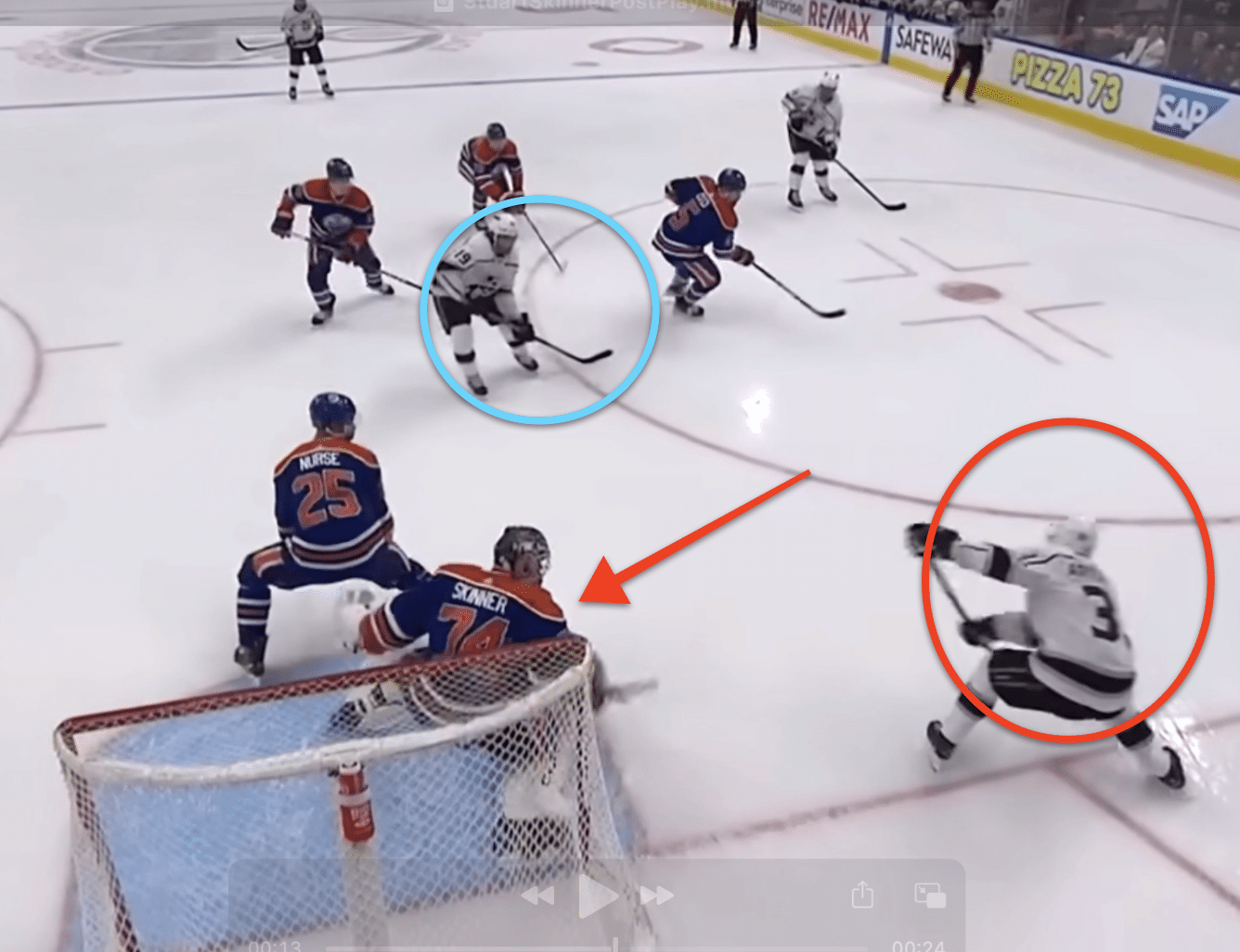In this video, we’re looking at a near perfectly played situation that still results in a goal.
In this clip, there are two key moments in how Skinner plays this scenario. Many goalies, NHL or not, will auto revert to the RVH in the first moment – which can lead to bad situations, or goals. Example of this is below. This is correct positioning for the current puck carrier.

In the second part of this clip, Skinner enters the RVH. In this case, this provides a great seal against the immediate scoring threat (a low shot on the ice).

As we can see from the video, as well as the screenshot above, the Oilers leave an attacking forward completely un-covered.
Instead of taking the shot, Arvidsson quickly moves the puck into the slot which results in a goal.
An Analysis of this situation
To sum it up, such is life at the NHL level.
What I like about the way Skinner played this (not entering the RVH unnecessarily when Arvidsson is behind the goal line further from the net) is that he maintained his footing. Far to often, goalies will default to the RVH immediately and it only makes their lives tougher.
Because Skinner maintained his footing initially, he was able to quickly get to the top of his crease to defend against a point shot.
He held his positioning as the puck worked it’s way back down the circle, played the RVH perfectly and was ultimately beat on a great play and a defensive breakdown from his own team.
The only way Skinner makes this save is on a worse placed shot from the Kings, or if he’s further back on his post, enters the RVH from a standing (not sliding) position, and doesn’t have to change direction bumping out from the post.
This was a great post play example from Stuart Skinner that unfortunately, resulted in a goal.